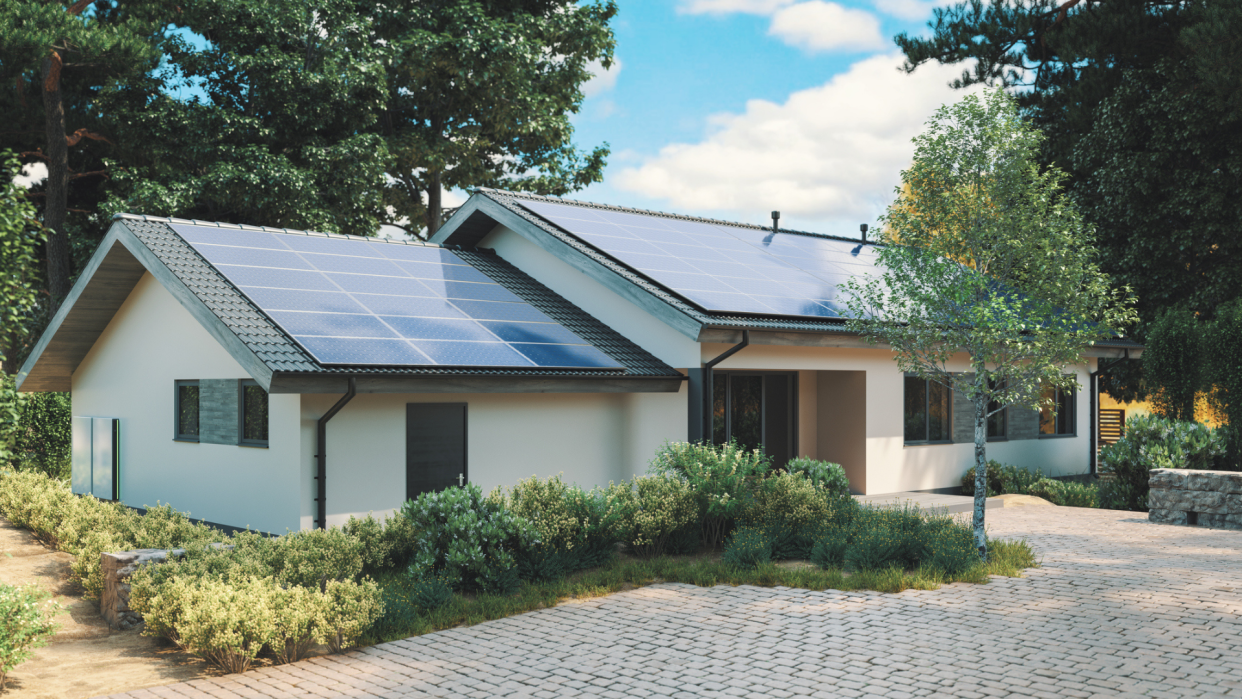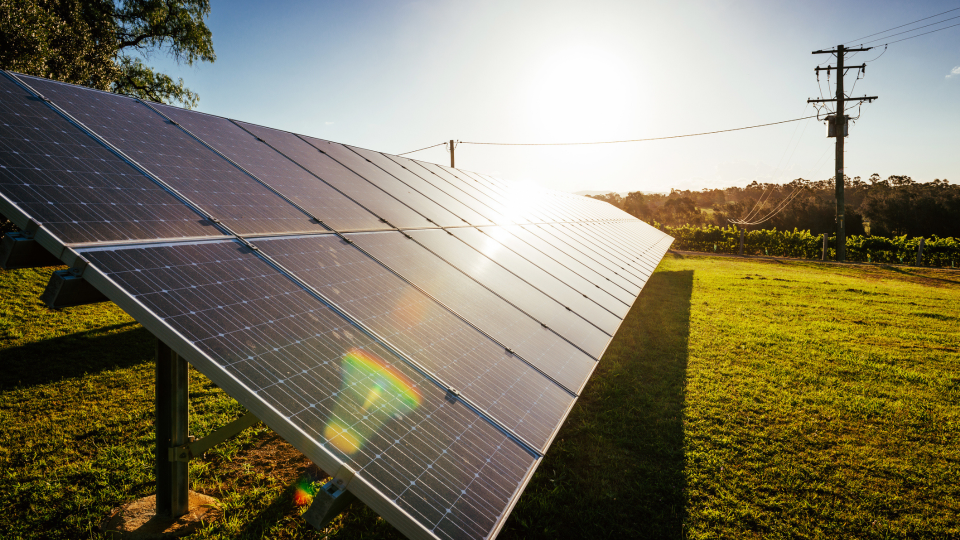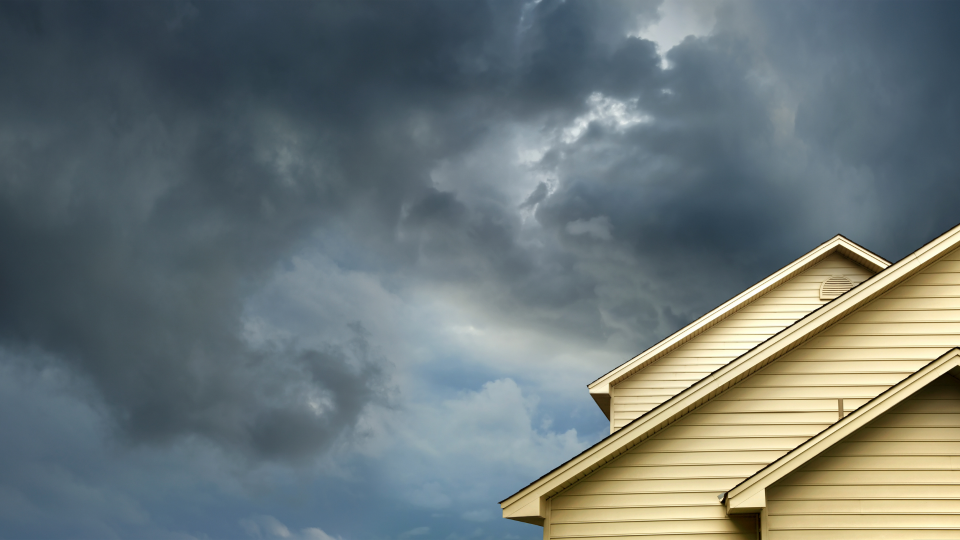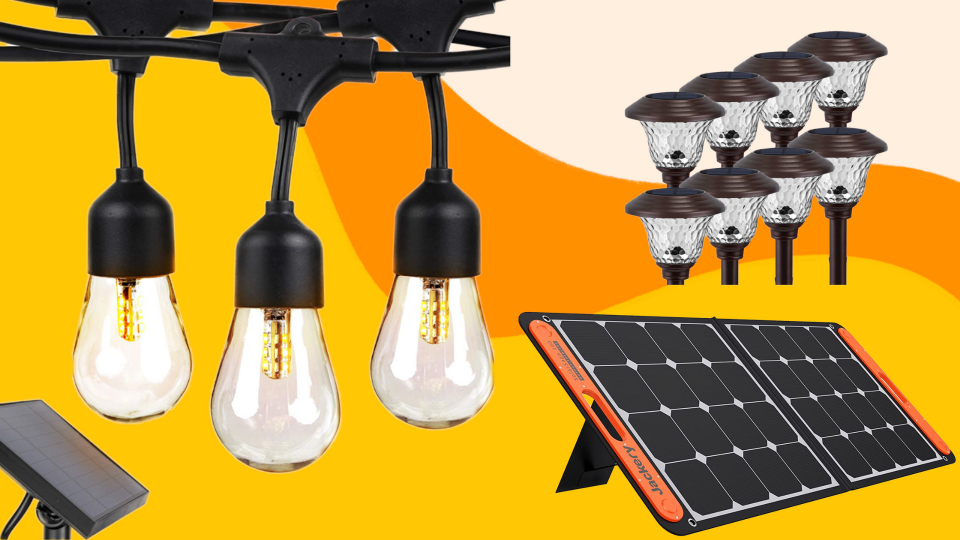Here are the basics of how solar panels work

Recommendations are independently chosen by Reviewed’s editors. Purchases you make through our links may earn us a commission.
Solar panels big and small are becoming an increasingly popular way to generate energy – especially at home. From sprawling solar farms to small-scale panels for outdoor lights and professionally installed panels on your roof, solar power has many applications that may leave you wondering, "How do solar panels work?"
Get deals and shopping advice delivered straight to your phone. Sign up for text message alerts from the experts at Reviewed.
With a recently-passed bill that aims to reduce the cost of renewable technology like solar panels, people are more curious than ever about them. We spoke to Michael Kempe, senior scientist at National Renewable Energy Laboratory to find out how do solar panels work.
►Related: Biden signs climate and health care bill. Now, Democrats race to explain its benefits
How do solar panels work?

The short answer is that solar panels collect sunlight and turn it into energy that you can use to power a variety of things like your garden lights or your backyard shed. The more technical answer is that solar power is created through photovoltaic cells that convert sunlight into electricity, Kempe says. When the sun’s rays shine down on the solar panel, the cells begin the process of turning sunlight into energy.
During the photovoltaic process, there are two bands within the solar panels that contain electrons. When the sun hits the solar panel, it knocks loose electrons within the panel. The movement of electrons creates energy which will be transformed into electricity.
Within the cells of the solar panel are silicon semiconductors (like you’d find in your smartphone or computer) that control the current of the energy created by the solar panel’s moving electrons. That energy creates a direct current which is the type of electricity used in batteries that power our electronic devices. The direct current energy can be stored in batteries that will eventually power your home when you need to use that energy. When the energy is pulled from those batteries storing the solar energy, it’s inverted into alternating current which is the same type of current that comes from the outlets in your home.
It’s certainly possible to take on installing solar panels yourself, however, you should expect to take on a project manager role since it will require coordination of materials, cooperation with your local energy company, and hiring workers to help you install the panels.
While it will be more expensive, bringing on a company to do the project for you will save you time and stress.
Do solar panels work on cloudy days?

While windmills need wind to produce power, solar is an all-weather renewable energy source. Even on a cloudy day, solar panels will produce energy. However, the panels will be significantly less productive and function closer to 25% efficiency. Even if you’re living in a climate that has more rainy days than the sun, you can still take advantage of solar power.
A true hindrance to solar energy, according to Kempe, is the objects and shading around the exterior of your home. Tree shade is important to the energy efficiency of your home as it can keep your house cool to cut back on energy costs. However, when it comes to solar panels, any shading decreases the efficiency of your solar panels.
While you can’t control cloudy skies, you can control the landscaping around your home that will shade your solar panels and decrease their efficiency.
How do you use solar power at home?

The best place to get started is by calculating how many panels you will need. You need to know how many kilowatt-hours you use a month (this information is available on your electrical bill).
Will Vandewiel, CEO of Unbound Solar, says that using your kWh is key in calculating because this will allow you to offset your energy cost accordingly.
According to Unbound Solar, 500 kWh requires 13 panels. Sometimes, solar energy can completely power homes, but that is rarely the case. In most instances of residential solar energy, solar can be used to power a home until a point, but most homes will remain on the grid.
Beyond the big panels you see constructed in fields or on top of residential rooftops, solar energy has small applications that are incredibly useful around the home. Solar-powered lights not only reduce energy usage, but also provide the convenience of not needing to be close to an outlet.
With proper care, solar panels can last you years to come, Kempe says. Solar energy is a fairly new technology discovered in 1954, but Kempe says that studies have shown panels can reliably last around 30 to 40 years.
With routine cleaning and proper maintenance, even your devices will last years and years on this renewable energy source.
What is net metering?

Net metering is used for homes that utilize both solar and traditional electricity. This means that for those who have solar panels that produce more energy than they are using in their home, that energy goes back into the grid and homeowners get credit for that energy from their local energy provider. (Make sure to check the net metering stipulations with your local energy provider, as well as your state's net metering laws.)
Kempe explains that electricity prices vary throughout the day, being at their most expensive when electric consumption is at its highest. However, in net metering, the credit received is always at a flat rate. Even if you’re giving power to the grid when electricity is at its most expensive, you’ll receive the same credit you would when the electric cost is at its cheapest.
There’s a lot more where this came from. Sign up for our weekly newsletter to get all our reviews, expert advice, deals and more.
The product experts at Reviewed have all your shopping needs covered. Follow Reviewed on Facebook, Twitter, Instagram, TikTok or Flipboard for the latest deals, product reviews, and more.
Prices were accurate at the time this article was published but may change over time.
This article originally appeared on Reviewed: Here are the basics on how solar panels work

 Yahoo Movies
Yahoo Movies 
